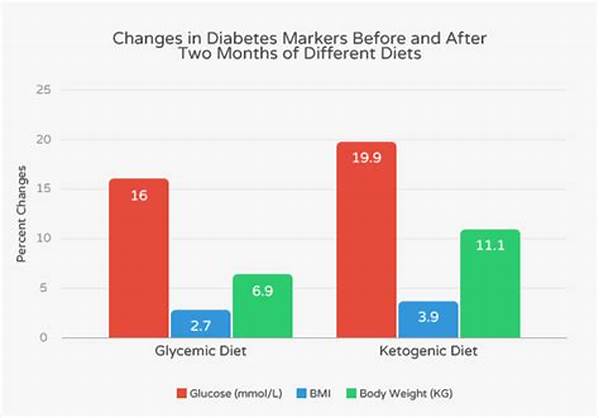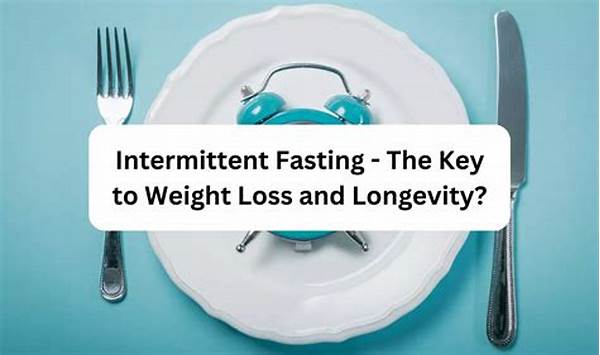- If for Blood Sugar Control: Findings from Asian Cohorts
- Breaking Down the Findings
- Descriptive Breakdown of IF for Blood Sugar Control
- The Impact of Intermittent Fasting in Modern Health
- Personal Stories: Testimonials Turned Into Global Strategies
- Top Examples of IF Practices in Asia
- Delving Deeper into IF for Blood Sugar Management
- Illustrative Cases of Asian-Fasting Practices
If for Blood Sugar Control: Findings from Asian Cohorts
In today’s fast-paced world, health concerns such as blood sugar levels are increasingly taking center stage in discussions about well-being and longevity. With diabetes affecting hundreds of millions around the globe, the quest for effective and manageable methods to control blood sugar has become more crucial than ever. Amidst various medical and lifestyle interventions, the concept of intermittent fasting (IF) has emerged as a promising strategy. Now, as scholars delve deeper, we uncover insights from an array of Asian cohorts with compelling findings about IF for blood sugar control. This exploration takes us across diverse cultural practices and dietary regimens, revealing a fascinating intersection of tradition and modern dietary science.
Read More : Monitoring Your Body During If A Beginner’s Guide
Picture the bustling streets of Tokyo, where the concept of balanced living transcends mere advice and becomes a lifestyle. Here, ancient methodologies effortlessly blend with cutting-edge research. It’s in such places that the principle of IF has gained a foothold. IF, involving cycles of fasting and eating, isn’t just a passing trend—it’s rooted in centuries-old practices like Buddhist fasting rituals in Japan or Ramadan fasting in predominantly Muslim regions of Asia. What’s changed today is our scientific understanding of these practices, especially with studies indicating potential benefits in managing and reducing blood sugar levels.
The spotlight now shines on if for blood sugar control: findings from Asian cohorts, where researchers identified how various fasting patterns could lead to significant improvements in glucose metabolism. But the question arises, why focus on Asian cohorts? Essentially, Asia, with its rich tapestry of cultures, provides a unique opportunity to assess the impacts of IF across genetically diverse populations with varying diets—ranging from high-rice diets in China to seafood-centric meals in coastal regions. Through such diversity, researchers can test the efficacy of IF more robustly, which in turn offers valuable data that may not emerge from studies in more homogenized cultural environments.
With burgeoning interest in controlling blood sugar naturally and effectively, this new focus represents a fusion of evidence and culture, science and tradition. Unpacking these findings is akin to opening a richly crafted novel where each page offers unique insights. What have Asian cohorts revealed? What potential does IF hold for global health? Buckle up, as we embark on an enlightening journey uncovering the secrets of if for blood sugar control: findings from Asian cohorts—your guide to possibly better health through informed choices.
Breaking Down the Findings
The revelations in the research field are astounding. Asian cohorts, through scientific investigations, highlight several dimensions in which IF optimizes blood sugar levels. It’s fascinating how these methodologies not only align with age-old traditions but also intersect with the exigencies of the modern lifestyle. Preliminary data shows a marked improvement in parameters like fasting glucose and insulin sensitivity among participants practicing IF. By integrating intermittent fasting, some individuals experienced smoother glucose peaks and troughs—a dream scenario for anyone struggling with metabolic syndrome.
The crux of these findings illuminates a new path forward not just for individuals in Asia but for anyone aiming for a more natural method to regulate their blood sugar. As the concepts of diet, culture, and genetics converge, we see motifs that were once relegated to past wisdom now evolving into modern science. It’s a therapeutic venture that’s not only promising but absolutely necessary for the future of dietary interventions.
—
Descriptive Breakdown of IF for Blood Sugar Control
The concept of intermittent fasting is no longer new to the health world. From social media influencers to wellness experts, many tout its remarkable benefits. But what if we told you there’s more to this dietary discussion than meets the eye? Especially when exploring if through the lens of Asian cohorts, a region brimming with diversity and rich cultural tapestries. In a space where fasting isn’t just a novelty but a way of life, what lessons can we glean for global blood sugar management?
Understanding the Asian Perspective
Asian cohorts offer a unique standpoint when investigating the benefits of intermittent fasting. Historically, fasting traditions exist within religious contexts like Ramadan and culturally rooted practices like Ayurvedic cleansing. These traditions, when studied scientifically, provide a massive dataset on the role fasting can play in modern health, specifically how it influences blood sugar levels. The wonder lies not just in tradition but in how these time-tested practices align with contemporary health protocols.
Unique Selling Points of IF in Asia
Amidst the scientific rigor, what’s truly captivating are the real-life stories from participants—testimonies from individuals breathing new life into age-old customs by seamlessly integrating IF into their diet, thereby reclaiming control over their blood sugar levels. These personal victories contribute a compelling narrative thread to if for blood sugar control: findings from Asian cohorts, showing a road map many aspire to follow.
The Impact of Intermittent Fasting in Modern Health
The widespread analysis about IF’s potential has ignited a spark that’s propelled its popularity beyond the confines of research labs. Still, it’s the grounded findings from Asian cohorts that lend a certain credence to the trend. By seguing between conventional eating habits and fasting periods, individuals have not only shared their breakthroughs but have embarked on a journey towards holistic wellness. Truly, these stories paired with analytical research endorse IF as a sustainable tool against the worldwide blood sugar epidemic.
Personal Stories: Testimonials Turned Into Global Strategies
Whether it’s a businessman in bustling Delhi or a Zen practitioner in rural Thailand, these personal insights transform testimonials into strategies, strategies into norms. What was once a solitary experiment now extends its reach, showcasing the efficacy, if for blood sugar control: findings from Asian cohorts, could have on global health narratives. It is as much about the numbers as it is about the humans behind them. The narrative is a powerful tool, proving that collective change begins with individual actions, echoing ever so deeply in our societal consciousness.
Top Examples of IF Practices in Asia
Intermittent fasting practices are diverse and culture-rich in Asia. Here’s a glimpse:
The delicate art of fasting, peppered across Asian realms, narrates a story transcending geography, reaching out with solutions embedded in cultural wisdom and promising new findings that study practitioners worldwide can appreciate.
—
Delving Deeper into IF for Blood Sugar Management
As we venture further into exploring if for blood sugar control: findings from Asian cohorts, it becomes evident that cultural frameworks enrich understanding. Scientific investigations tirelessly work toward uncovering the mechanisms behind IF’s success, touching on themes of evolution, adaptation, and lifestyle balance. Readers interested in adopting these fasting routines must consider individual health circumstances.
Fasting Across Borders
Eastern wisdom underpins most fasting techniques explored within Asian contexts. These allow a multi-faceted examination of IF’s effects. What exists at the intersection of culture and science is a thriving ecosystem of knowledge challenging each fasting participant to rethink their approach to sustainable health.
—
Illustrative Cases of Asian-Fasting Practices
To help visualize, here are illustrative cases showcasing unique IF applications in Asia:
These illustrations artfully convey the breadth and creativity embodied in these practices, bridging tradition and cutting-edge health strategies.
—
In conclusion, reflecting on if for blood sugar control: findings from Asian cohorts enriches our understanding, Emulating such practices might just expose us to a gentle yet powerful metamorphosis toward better health. The richness of cultural diversity paired with scientific rationale makes this an exciting time for proponents of IF. The global impact and potential lifestyle transformations speak volumes about the importance of integrating these findings into everyday lives.
Let’s embrace this blend of ancient wisdom and modern science, because the secret to managing our blood sugar just might lie in those fasting windows practiced halfway around the world.













